- NY Botanical Garden launches summer Edible Garden celebration.
- Thingy for getting more syrup out of maples invented.
- Farmer floods his fields on purpose.
- Insights into tomato late-blight resistance. Do try and keep up!
- A very English guerrilla gardener.
- Pictures of weird fruits and vegetables.
- Russian starters. Uhm, I spot a trend.
- The future of aquaculture: giant robotic roaming cages.
- Saving California’s Sebastopol Gravenstein apple.
- “Zeytinburnu Medicinal Plant Garden, opened in 2005, is Turkey’s first and only medicinal plant garden.”
- Something else has it in for bees: Chinese hornets.
Nibbles: Seed travels, Carotenoids in cucumbers, Tea and hibiscus, Sea level rise, Tewolde on climate change, SPGRC
- After a year’s travel in search of seeds, Adam Forbes turns in his report.
- The genetics of orange-fleshed cucumbers elucidated.
- Tea and hibiscus booze.
- Video of honey harvesting.
- Maps of sea level rise. All somewhat unsatisfying, somehow.
- “Because we are poor, we shall suffer first but, ultimately, we shall all die together.”
- SADC Plant Genetic Resources Centre (SPGRC) director Paul Munyenyembe does the public awareness thing.
No little houses on this prairie
I promised you more on the Doolittle Prairie, and here it is. But first, thanks to Candy Gardner for arranging the visit, and to Mark Widrlechner for leading the tour.
Doolittle Prairie State Preserve, near Story City in Iowa, is a small remnant of native tallgrass prairie. The 26-acre state-owned protected area supports about 220 plant species. 1 About half of the area, the northern part, has never been ploughed or grazed, though hay was cut until the 60s. The southern part has been grazed, and the southwest corner ploughed until 1965 and then replanted with seed from the northern section. All around are fields of maize and soybean. Management is by cutting and burning, to keep down exotics, and encroaching shrubs and trees.
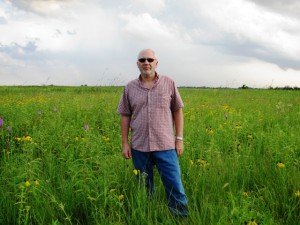
It’s a very evocative place. You can just imagine the deer and the buffalo roaming on it back in the day. There are still deer. Buffalo, not so much. 2 It’s also pretty interesting from an agrobiodiversity perspective, because it’s got quite a number of crop wild relatives for such a small place.
A couple of species of wild sunflowers, for example. This one is Helianthus rigidus:
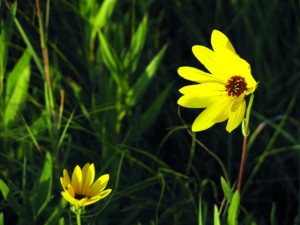
There are also native species of Allium, Elymus, Lactuca, Fragaria, Prunus, Ribes, Rubus, and Vitis:
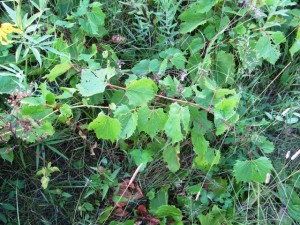
All in a beautifully colorful setting, at least at this time of the year.
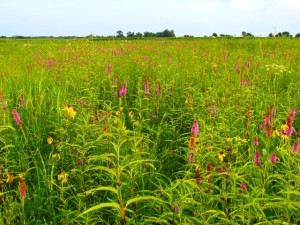
So, a bit of a CWR hotspot, in its own small way, and protected to boot. You may remember the recent global review of the role of protected areas in CWR conservation. I don’t think that CWR have been mapped in the US in the same way as has been done in Russia, however. 3 Once you have geo-referenced CWR locations, you could easily mash the result up with the online map of protected areas to see which national parks and reserves contribute most to CWR conservation. Anybody out there working on this? I bet little Doolittle Prairie would be on that list.
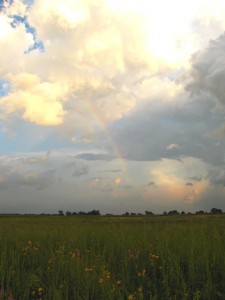
Mystery of the undead Fukuoka
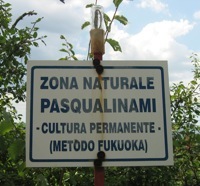 File this one under spooky. Yesterday, walking in the Italian countryside, I spotted an unusual sign. It says, in effect, Permaculture, Fukuoka Method. How many people passing that sign would have the faintest idea what it meant? My companion had no idea who had put it up, or why. I told him briefly about Fukuoka, and he said he’d ask around among his neighbours and see what he could discover. And I took a close look at the hedge in which the sign was planted, and I couldn’t really see anything too unusual about it. A couple of apples, possibly not wildlings, brambles, rose-hips.
File this one under spooky. Yesterday, walking in the Italian countryside, I spotted an unusual sign. It says, in effect, Permaculture, Fukuoka Method. How many people passing that sign would have the faintest idea what it meant? My companion had no idea who had put it up, or why. I told him briefly about Fukuoka, and he said he’d ask around among his neighbours and see what he could discover. And I took a close look at the hedge in which the sign was planted, and I couldn’t really see anything too unusual about it. A couple of apples, possibly not wildlings, brambles, rose-hips.
The spooky part? Exactly one year ago today, we noted the death of Masanobu Fukuoka, who died a year before I snapped that sign.
Was it really a permaculture hedge? And is this something general in Italy, posting signs of this nature? Maybe someone could enlighten me.
Thank you, Ames!
Just back from Heartland and, before the jetlag overpowers me, I really want to thank everyone at the North Central Regional Plant Introduction Station (NC7) in Ames, Iowa for their incredible hospitality over the past week. I know this will get to them because a couple of the people working at the station told me they visit us occasionally. Grateful for that too!
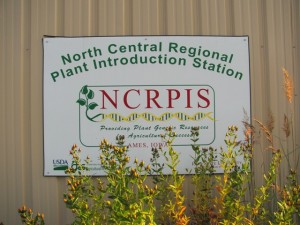
The ARS facility at Ames is the oldest of the US plant introduction stations. It’s main crop is maize, of which it has a collection of about 20,000 accessions from all over the world.

But there are also some 30,000 accessions of a bunch of other crops and wild species.
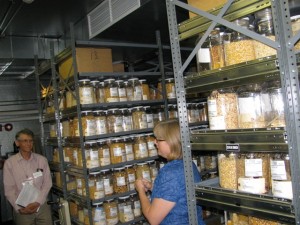
Many of the crops require careful management of pollinators during regeneration and multiplication. Fortunately, there hasn’t been any colony collapse disorder among the beehives used and maintained on the station.
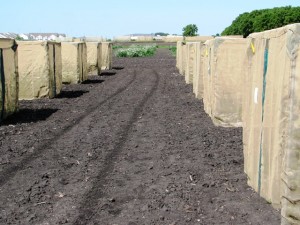
Like many of the active genebanks of the USDA National Plant Germplasm System, the one at Ames benefits from an almost symbiotic relationship with nearby Iowa State University, with some staff also having university duties and many students gaining hands-on experience in the genebank.
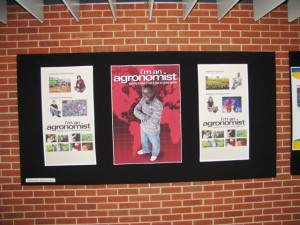
Also nearby is a fascinating prairie remnant, Doolittle Prairie, which houses about a dozen crop wild relatives. I’ll say a bit more about that in due course, but here’s what the place looks like at sunset.
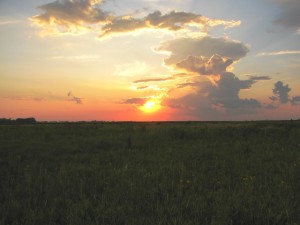
Thanks again to everyone at NC7!
